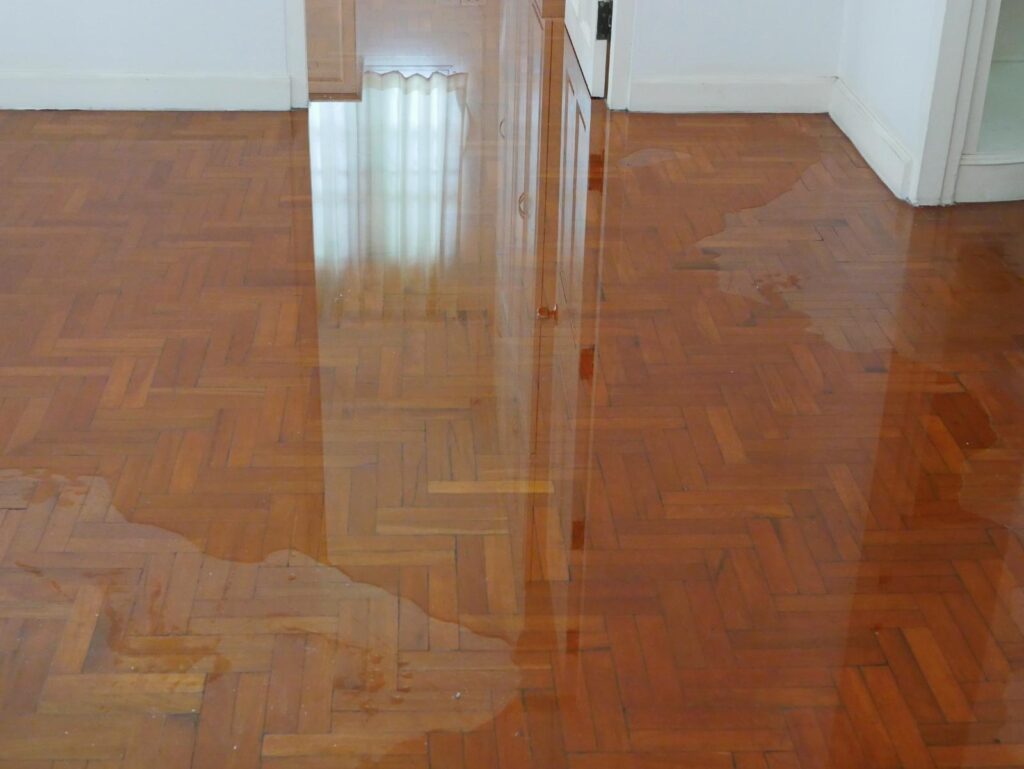
Contents
Imagine standing in a room where the walls glisten with water, remnants of a flood cleanup looming large. It’s overwhelming, but knowing the right steps can make a difference. From evaluating the damage to effective mold remediation, each stage is essential. You’ll want to tackle these challenges systematically to restore your space and peace of mind. So, what’s the first move you should take in this intimidating cleanup process?
Key Takeaways
- Utilize submersible pumps for large water extraction and wet/dry vacuums for smaller spaces to effectively remove standing water.
- Implement drying techniques by increasing air circulation with fans and using dehumidifiers to maintain humidity levels below 50%.
- Conduct thorough mold remediation by identifying moisture sources, wearing protective gear, and cleaning or disposing of affected materials.
- Inspect and document structural damage to foundations, walls, and roofs for insurance claims and local building code compliance.
- Apply waterproofing solutions and structural reinforcements to prevent future flooding and protect against water damage.
Assessing the Damage and Safety Precautions
When you step into a flood-affected area, it’s critical to evaluate the damage while keeping safety at the forefront.
Start by wearing appropriate safety equipment like gloves, boots, and masks to protect yourself from hazardous materials and contaminants. As you examine the damage, look for structural issues, such as cracks in walls or compromised foundations. Document what you find, noting the extent of water intrusion and the condition of personal belongings.
It’s significant to be methodical in your damage evaluation, as this helps you prioritize what needs immediate attention. Take your time and don’t rush; rushing can lead to overlooked hazards.
If you’re unsure about certain areas, consult professionals who specialize in flood restoration. Remember, your safety and well-being are paramount.
Water Extraction Techniques
Once you’ve assessed the damage and guaranteed your safety, it’s time to tackle the water removal process. Effective water extraction is vital to prevent further issues. You’ll want to utilize various extraction methods and pumping equipment tailored to your situation.
Here’s a simple overview of some common techniques:
| Extraction Method | Equipment Used | Best For |
|---|---|---|
| Submersible Pumping | Electric Pumps | Large volumes of standing water |
| Wet/Dry Vacuum | Shop-Vac | Smaller spaces and debris |
| Truck-Mounted Pump | Professional Trucks | Extensive flooding scenarios |
Drying and Dehumidification Methods
After successfully extracting water, the next critical step is drying and dehumidification, which helps prevent mold growth and structural damage.
To achieve effective moisture control, you’ll want to increase air circulation throughout the affected areas. Use fans to promote airflow and speed up the drying process. Position them strategically to direct airflow at wet surfaces, encouraging evaporation.
Dehumidifiers are essential tools in this phase. They help remove moisture from the air, further preventing dampness and creating an environment where mold struggles to thrive.
Monitor humidity levels regularly; ideally, you want to keep them below 50%.
Mold Remediation Strategies
As you tackle mold issues following a flood, it’s crucial to act swiftly and decisively to prevent further damage to your home and health.
Begin by identifying the source of moisture that’s fostering mold growth; without addressing this, any cleanup efforts will be in vain. Wear protective gear, like masks and gloves, to safeguard against health risks associated with mold exposure.
Next, contain the affected area using plastic sheeting to prevent spores from spreading. Use a mixture of water and detergent for non-porous surfaces, scrubbing thoroughly to remove mold.
For porous materials like drywall or carpets, it’s often best to dispose of them to guarantee complete removal.
Finally, guarantee proper ventilation and consider a dehumidifier to maintain dry conditions moving forward.
Structural Repair and Restoration
After a flood, evaluating structural damage is essential to guarantee your home’s safety and integrity.
You’ll want to understand the repair techniques and materials best suited for your specific situation, as this can greatly impact the longevity of your repairs.
Let’s explore how to effectively restore your home while addressing any potential issues along the way.
Assessing Structural Damage
When flooding occurs, evaluating structural damage is essential to guarantee your safety and the integrity of your property.
Start by inspecting all areas, including the foundation, walls, and roof. Look for cracks, warping, or any signs of weakness.
It’s crucial to document the damage for your flood insurance claim, ensuring you capture all necessary details.
Familiarize yourself with local building codes, as these guidelines will help you understand what repairs are required to restore your home safely.
Don’t hesitate to reach out to professionals if you’re uncertain; they can provide invaluable insights and support.
Repair Techniques and Materials
Once you’ve assessed the structural damage, it’s time to focus on the repair techniques and materials that will bring your home back to its former state.
Choosing the right repair materials is vital for a successful restoration. Here are three essential restoration techniques to take into account:
- Drying and Dehumidification: Make sure all areas are completely dry to prevent mold growth.
- Structural Reinforcement: Use materials like steel beams or plywood to strengthen weakened areas.
- Waterproofing Solutions: Apply sealants or membranes to protect against future water damage.
Content Cleaning and Salvage
As you navigate the aftermath of a flood, understanding the importance of content cleaning and salvage becomes essential for restoring your home and belongings. Conducting a thorough content inventory helps you identify which items can be saved and which must be discarded. Using effective salvage methods, you can clean and restore cherished belongings, preserving memories that matter most.
| Item Type | Condition | Salvage Potential |
|---|---|---|
| Family Photos | Damaged but dry | High |
| Wooden Furniture | Swollen | Moderate |
| Clothing | Moldy | Low |
Each item you salvage represents a piece of your life, so take the time to assess and clean them carefully. Whether it’s a beloved piece of furniture or treasured photographs, restoring these items can bring comfort and a sense of normalcy amid the chaos.
Preventative Measures for Future Flooding
To protect your property from future flooding, it’s crucial to evaluate landscape grading and effective drainage systems.
By properly grading your yard, you can direct water away from your home, minimizing the risk of water accumulation.
Additionally, investing in well-designed drainage solutions will help manage heavy rainfall and prevent water damage before it starts.
Landscape Grading Techniques
While you may not always control the weather, you can certainly influence how water flows on your property through effective landscape grading techniques.
Proper landscape design involves strategically shaping your land to direct water away from your home, reducing the risk of flooding.
Here are three essential grading techniques to take into account:
- Slope Your Yard: Verify the ground slopes away from your foundation to prevent water pooling.
- Create Swales: These shallow ditches can help channel water away from critical areas.
- Use Grading Tools: Tools like a level and rake can assist in achieving the right angles for effective drainage.
Effective Drainage Systems
When heavy rains hit, having an effective drainage system in place can make all the difference in preventing flooding on your property. Implementing smart drainage solutions is key to managing stormwater effectively.
Start by evaluating your landscape; verify that downspouts direct water away from your foundation. Consider installing trench drains or French drains to channel excess water away efficiently.
Regular maintenance, like clearing gutters and checking for blockages, can save you from future headaches. You’re not alone in this—many homeowners face similar challenges, and investing time in stormwater management can foster a sense of community resilience.
Final Thoughts
After a flood, think of your home like a wounded soldier—it needs careful attention to heal. By following these seven restoration solutions, you can effectively revive your space, ensuring it’s not only livable but also protected against future threats. Just as a soldier requires rehabilitation and support, your home deserves the same commitment. Don’t rush the process; take the time to assess, repair, and fortify, so it can stand strong against whatever comes next.
Recent Posts
What Are Effective Flood Cleanup Solutions?
When faced with flood damage, your first step is to assess the situation carefully. You
Fast Water Damage Recovery: FAQs Answered
When you face water damage, knowing the right steps to take can make all the
Reliable Guide to Swift Water Damage Recovery
Did you know that nearly 14,000 people experience a water damage emergency every day in
